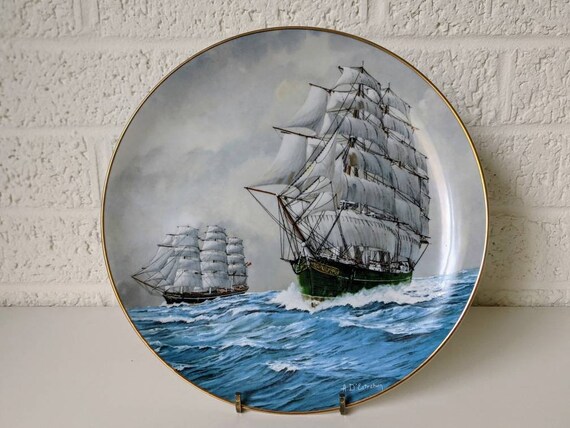Introduction: The Allure of Vintage Decorative Plates
Vintage decorative plates have a unique charm that can bring a touch of nostalgia and elegance to any home. As an avid collector and enthusiast, I’ve spent years uncovering the stories behind these beautiful pieces. In this guide, I’ll share my insights, tips, and knowledge on vintage decorative plates, so you can appreciate their beauty and significance just as much as I do.
What Are Vintage Decorative Plates?
Vintage decorative plates are plates typically made of ceramic, porcelain, or glass that were crafted at least 20 years ago. They often feature intricate designs, unique patterns, or historical imagery, making them sought-after collectibles.
Characteristics of Vintage Decorative Plates
- Artistic Designs: Many vintage plates showcase artistic patterns, hand-painted details, and cultural motifs.
- Materials: Common materials include porcelain, bone china, and earthenware.
- Limited Editions: Some plates are part of limited-edition collections, increasing their value.
- Historical Significance: Many plates commemorate historical events, famous figures, or cultural symbols.
The History Behind Vintage Decorative Plates
The tradition of decorative plates dates back centuries, with roots in various cultures around the world. Let’s delve into some historical highlights.
Origins and Development
In Europe, decorative plates became popular in the 18th century, particularly in countries like France, England, and Germany. The introduction of transfer printing and advancements in kiln technology allowed for mass production, making these artworks more accessible.
Notable Manufacturers
Some of the most reputable manufacturers of vintage plates include:
- Royal Worcester: Established in 1751, known for its fine porcelain.
- Wedgwood: Founded in 1759, famous for its jasperware and stoneware.
- Meissen: The first European porcelain manufacturer, known for its intricate designs.
- Limoges: A city in France synonymous with high-quality porcelain.
Why Collect Vintage Decorative Plates?
There are many reasons for collecting vintage decorative plates, from aesthetic enjoyment to investment potential.
Personal Connection
For many collectors, vintage plates carry sentimental value. They may remind us of family gatherings or cherished moments. For me, each plate tells a story and evokes memories of my travels and the people I’ve met along the way.
Investment Potential
Some vintage plates can appreciate significantly in value over time. However, this requires careful research and knowledge of the market.
Home Decor Enhancement
Decorative plates can enhance your home’s aesthetic, serving as beautiful wall art, table centerpieces, or shelf displays.
How to Start Collecting Vintage Decorative Plates
Starting a collection can be overwhelming, but with a few tips, you can embark on this exciting journey with confidence.
Research Before You Buy
Educate yourself about different manufacturers, styles, and values. Books, online forums, and antique shows can provide valuable insights.
Recommended Resources
- Antique Collector’s Guide
- Online Marketplaces (eBay, Etsy)
- Local Antique Shops and Fairs
Know What to Look For
Pay attention to factors like condition, rarity, manufacturer marks, and historical significance when evaluating a plate.

Set a Budget
Determine how much you’re willing to spend. Prices can range from a few dollars to several hundred or even thousands for rare pieces.
Displaying Your Vintage Decorative Plates
Once you’ve built your collection, displaying your plates can be an art in itself.
Creative Display Ideas
- Plate Hangers: Use decorative plate hangers to mount plates on walls.
- Plate Stands: Showcase plates on stands for tabletops or shelves.
- Plate Racks: Install a plate rack to create an eye-catching display.

Table Settings
Vintage plates can add an elegant touch to your dining experiences. Consider using them for special occasions or as part of your everyday table settings.
Tips for Caring for Vintage Decorative Plates
Proper care is essential to preserve the beauty and integrity of your vintage plates.
Cleaning and Maintenance
Always clean plates gently using a soft cloth. Avoid harsh chemicals and, when possible, hand-wash instead of using a dishwasher.

Storage Solutions
Store plates in a safe place, away from direct sunlight and humidity, to avoid damage. Utilize plate boxes or padded storage containers for protection.
Condition Monitoring
Regularly check the condition of your plates. Look for cracks, chips, or fading and address any issues immediately.

Pros and Cons of Collecting Vintage Decorative Plates
| Pros | Cons |
|---|---|
| Unique Artworks | Can be expensive, especially for rare pieces |
| Sentimental Value | Requires knowledge to avoid fakes |
| Investment Potential | Storage can be challenging |
| Home Decor Enhancement | Fragile and requires careful handling |
Frequently Asked Questions (FAQs)

1. How do I determine the value of my vintage decorative plates?
Consult price guides, auction results, and online marketplaces to understand the value. Condition, rarity, and demand all influence pricing.
2. Are vintage decorative plates worth anything?
Yes, many vintage plates can be valuable, especially if they are rare, in good condition, and from reputable manufacturers.
3. Where can I find vintage decorative plates to add to my collection?
Look at estate sales, antique shops, thrift stores, and online platforms like eBay or Etsy for unique finds.
4. Can I use vintage decorative plates for serving food?
While some vintage plates are food-safe, check for any manufacturer guidelines. Many collectors prefer to keep them for display purposes only.
5. How can I tell if a plate is truly vintage?
Look for manufacturer markings, check the date of production, and assess the style and material. Researching the plate’s history can also provide insights.